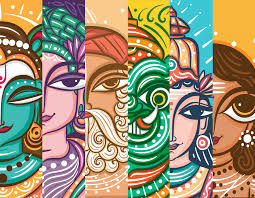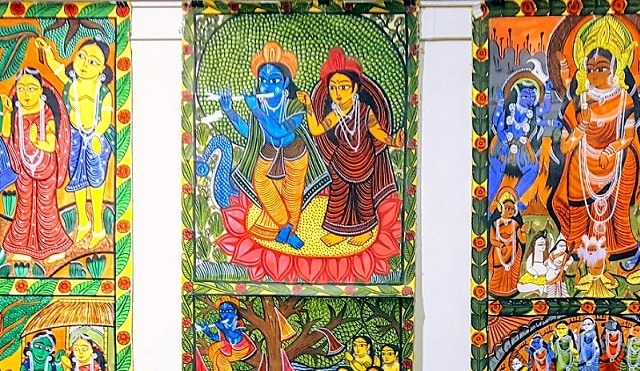
Menu

Patachitra, or scroll painting, is one of Bangladesh’s oldest and most compelling art forms, rooted deeply in rural storytelling traditions. These long, hand-painted scrolls are created on cloth or paper, depicting vibrant, sequential scenes from mythology, folklore, everyday village life, and moral tales. The artist—called a patua—is both painter and performer: as they unroll the scroll in front of an audience, they sing the stories scene by scene, bringing the painted images to life with music and narrative.
Bangladeshi Patachitra is known for its bold colors, dramatic composition, and stylized figures. Natural dyes and pigments were traditionally used—red from madder root, black from soot, yellow from turmeric—creating a palette that feels both earthy and intensely vivid. Each frame within the scroll is bordered and arranged to guide the viewer through a visual journey, almost like an ancient comic strip or storyboard.
Beyond their aesthetic appeal, these scrolls are carriers of collective memory and cultural values. They teach moral lessons, preserve local myths, and document social events. In some regions, themes range from Hindu epics like the Ramayana to Islamic folk tales and local legends, reflecting the syncretic culture of Bengal. Patuas often customize scrolls for their audience, making the tradition flexible and responsive.
In modern times, Patachitra has seen a revival as an art market commodity, with individual panels framed for urban buyers and international collectors. Yet many artists continue to uphold the old storytelling practice in fairs and village gatherings. As both heritage and living art, Bangladeshi Patachitra connects the past to the present, keeping the magic of oral tradition and visual art alive in a rapidly changing world.

@THE INDIAN ART COTTAGE
© The Indian Art Cottage | All Rights Reserved | 2025